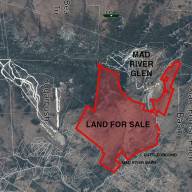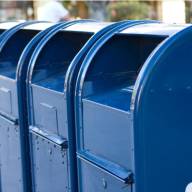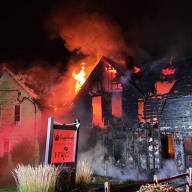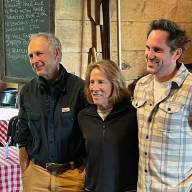In the fall, bears are hard at work searching for plenty of food so they can fatten up for the winter ahead. The hunt for food starts in late summer as berries and fruits ripen and shifts into high gear when calorie-packed nuts and seeds (soft and hard mast) are available. By fall bears are foraging up to 20 hours a day in a race against the clock. This annual power-eating marathon is called hyperphagia.
During hyperphagia, bears need to eat 10 times the calories they normally consume – that’s at least 20,000 calories a day. Their goal: put on as much weight and insulating fat as possible before turning in for the winter. Even bears that live in warmer climates and den up later or sometimes not at all still go into hyperphagia in the fall.
A pound of acorns has about 2,100 calories; a pound of blueberries, just 256 calories. It takes many hours of foraging each day for bears to find 20,000 calories’ worth of nuts and berries. But just one bird feeder full of black oil sunflower seed or one garbage container overflowing with leftovers can reward a bear with a day’s worth of calories for less than an hour’s work. No wonder human-provided foods can be even more tempting as winter closes in.
A NO-BEAR FOOD ZONE
Barbeques – Ever noticed how a fall cookout or tailgate party can fill the whole neighborhood with enticing smells? Just imagine how good that smells to a hungry bear. So, don’t leave food unattended. After the party’s over, clean up any spills, wipe down all the surfaces and thoroughly clean your grill, including the drip tray and grease pan. Put yummy-smelling (to a bear) trash and leftovers in bear-resistant containers or take inside. Don’t leave trash, empty cans and bottles or anything else with an odor on the porch or anywhere else bears could access it.
Gardens and orchards – Harvest fruits, nuts, and garden produce. Many orchardists advise harvesting fruit a day or two before it’s fully ripe. Bears and other critters have sensitive noses that tell them when it’s ripe for the picking. Pick up any fallen produce daily. When canning fruit or vegetables, don’t cool them on the porch.
Compost – Don’t add pungent items such as meat, melon rinds, or sweet-smelling foods to the compost pile. Cover any food scraps with plenty of yard debris, grass clippings, sawdust or shredded paper to help contain odors. Regularly turn the pile and add lime to reduce odors. Consider using a hard, durable bin with a sturdy cover that can be locked or installing an electric fence to keep bears away. A bear’s nose knows when folks compost something on the no-no list.
Chickens, livestock and bees – Honey, bee larva, chickens and other small livestock, eggs and feed all attract hungry bears. Install electric fencing and motion-detecting lights around chicken coops, beehives and livestock enclosures.
Bird feeders – Resist the urge to put out bird feeders at the first hint of fall; bears can smell birdseed from more than a mile away. A bird feeder that holds 7 pounds of nutritious seeds delivers 18,000 calories a bear can gobble down in minutes. Natural foods for birds are widely available in the fall when plants are going to seed. Download the free bulletin, Attract Birds, Not Bears, for lots of BearWise ideas.
Garbage – Shorter days and longer nights give bears more time to roam through neighborhoods looking for food. Use bear-resistant trash containers or keep trash inside a sturdy locked building until the morning of pick up.
Pets – Feed pets indoors. If they must be feed outside, remove bowls as soon as pets finished eating and keep the surrounding area clean. Odors from pet food can linger for hours, so be sure to check the yard before letting pets out or going out. Dog owners can download the free Dogs & Bears bulletin for tips on keeping dogs, bears and people safe.
How BearWise Are You? Download our helpful Be BearWise At Home Checklist today. Taking precautions now will help you prevent problems around your home and help keep bears wild.
Posted by the MRV Bear Initiative with permission from BearWise. The MRV Bear Initiative is a volunteer working group represented by conservation organizations in Duxbury, Fayston, Moretown, Waitsfield and Warren, Friends of the Mad River, Stark Mountain Foundation, and Sugarbush Resort. The goal is to collectively improve understanding of and how to coexist with calorie-seeking, black bear neighbors. Check out the resource page at https://www.madrivervalley.com/stewardmrv/living-with-bears/.













